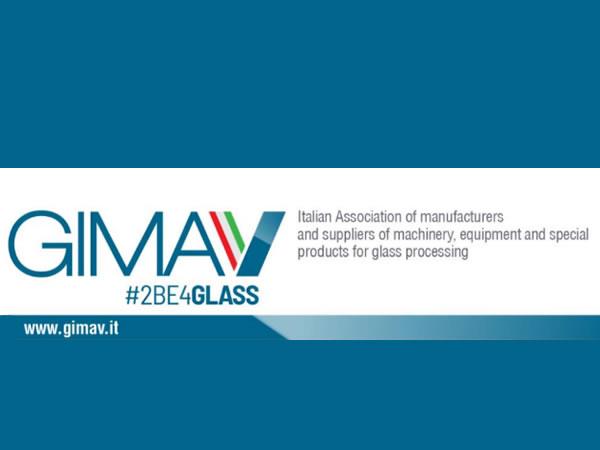
Date: 6 July 2020
INDUSTRY PERFORMANCE IN 2019
Positive results in 2019 (+2.7%) were driven by a rise in exports (+3.7%) allowing Italy’s glass processing technologies industry to continue the growth trend that has kept it in a starring role for the last decade. Thanks in part to the revision of the customs codes used in the survey, it achieved an absolute value of overall sales in excess of 2.3 billion Euro. Domestic sales by Italian manufacturers were stable (+0.1%) and, despite sluggish demand (-0.4%), Italian products still fared better than imports (-1.2%).
Growth in exports and, at the same time, a decrease in imports worked in favor of the sector’s trade balance (+5.4%) which, at 1,275 billion Euro, accounts for nearly 55% of sales: “this means that for every Euro invested in the sector, we contribute 55 cents to our country’s positive trade balance,” commented GIMAV’s re- elected President, Michele Gusti – “those who determine our country’s economic and industrial policies would do well to take this outstanding performance into account by rewarding it more!"
The sector’s competitiveness indicators are extremely positive, and both on the upswing – with a 72.2% export share of sales and 61.3% dominance of the domestic market – giving it an ample margin in the area that sets Italy’s excellences apart. Also on the rise, average sales per employee (+2.5% over 2018), nearly 300,000 €. Positive figures for the industry as a whole, but they are not evenly distributed among the three sectors that compose it. In fact, flat glass processing technologies fell 1.3% compared to 2018, due to small losses in exports (-0.5%) and more marked losses (-3.2%) in domestic sales.
However, sector imports (down 4.4%) were even more affected by the slowdown in domestic sales (-3.3%). On the other extreme, in 2019 the hollow glass processing technologies sector gained almost 30% over 2018 figures, thanks to excellent performance in both foreign (31.8%) and domestic (17.2%) markets. Proving the vitality of the domestic market (+9.9%), sector imports also increased in 2019, but to a much lesser extent (+6.4%). "Accessories and other technologies" remained stable, which offset negative performance on international markets (- 0.9%) with a favorable upswing (+2%) on the domestic market, capturing demand by Italian manufacturers much better than its foreign competitors, as indicated by the 2.5% drop in imports.
2020 FORECASTS AND THE EFFECTS OF THE COVID-19 PANDEMIC
As is customary, again this year, the GIMAV member meeting included looking at forecasts for the current year and discussing the results of the 2020 qualitative economic survey, processed in aggregate percentage form. Prior to the COVID-19 outbreak, member companies had projected very positive sector results: overall 86.4% of the companies interviewed (Italian and international) anticipated growth and the remaining 13.6% did not foresee any slowing. In detail, 91.3% of the respondents forecast a rise in growth when considering only foreign markets (8.7% expected them to be stable); while expectations for the domestic market came in at a “more limited” 76.2%; 19% of the respondents expected it to remain stable, and the remaining 4.8% forecast diminishing growth.
The effects of the pandemic have dramatically changed industry scenarios and, to date, it is impossible to make any reliable forecasts of 2020 performance, especially when considering any further developments that might occur. To make a useful contribution in this regard, the industry report was supplemented with the results of the survey and ‘photographs’ of the situation during the pandemic. Considering that in 2019, the months of March, April and May contributed more than 26% of the total to the year’s results in full lockdown, 43% of the companies were shut down and, among the companies that were open, 65% had to stop production completely. Furthermore, 71% of industry companies had to resort to unemployment compensation schemes for at least 70% of their workforce.
METHODOLOGY
Given the extreme variability of the customs codes used by industry companies, in the interest of a more robust data sample for analysis, new customs codes were introduced and the “Accessories and Other Technologies” sector was separated out. The export and import shares were weighted to make the analysis even more representative of real industry dynamics and the final result as objective as possible.
While not yet precise in its definition of the absolute values (already revised upwards but with further significant margins of increase), the analysis does, however, provide a very approximate overview of the dynamics, percentages and, more generally, the trade flows between the Italian industry and its main trade partner countries for imports and exports.
GRAPHS AND TABLES.



 600450
600450







Add new comment